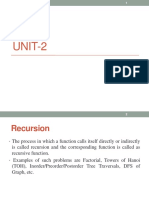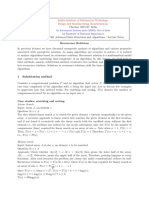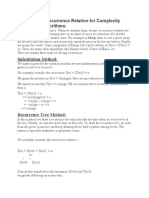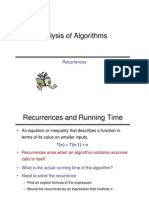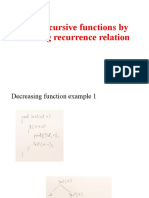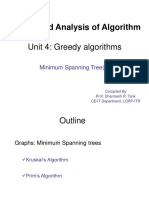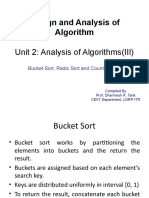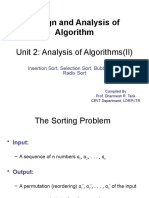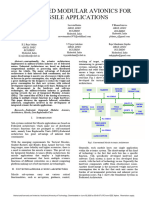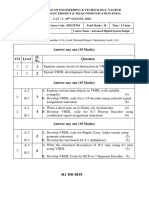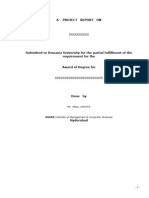0% found this document useful (0 votes)
134 views49 pagesDivide & Conquer Algorithms Guide
The document discusses divide and conquer algorithms and solving recurrence relations. It begins by introducing divide and conquer and providing examples of problems it can solve like sorting and matrix multiplication. It then discusses recurrence relations and methods for solving them including substitution, recurrence trees, and the master's method. As an example, it uses the recurrence tree method to solve the recurrence relation T(n) = 2T(n/2) + n, determining the time complexity is O(n log n).
Uploaded by
Harshil ModhCopyright
© © All Rights Reserved
We take content rights seriously. If you suspect this is your content, claim it here.
Available Formats
Download as PDF, TXT or read online on Scribd
0% found this document useful (0 votes)
134 views49 pagesDivide & Conquer Algorithms Guide
The document discusses divide and conquer algorithms and solving recurrence relations. It begins by introducing divide and conquer and providing examples of problems it can solve like sorting and matrix multiplication. It then discusses recurrence relations and methods for solving them including substitution, recurrence trees, and the master's method. As an example, it uses the recurrence tree method to solve the recurrence relation T(n) = 2T(n/2) + n, determining the time complexity is O(n log n).
Uploaded by
Harshil ModhCopyright
© © All Rights Reserved
We take content rights seriously. If you suspect this is your content, claim it here.
Available Formats
Download as PDF, TXT or read online on Scribd
/ 49




















